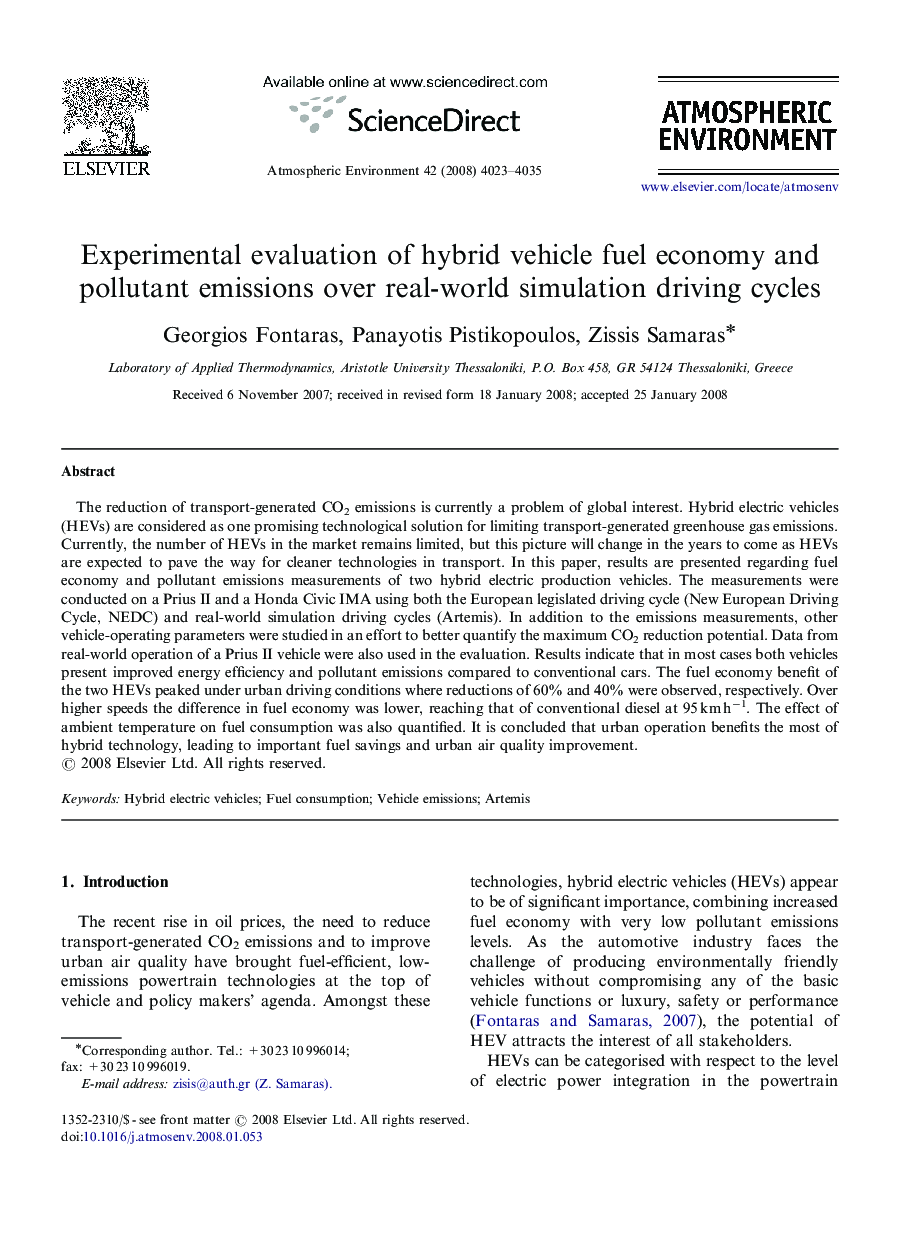| Article ID | Journal | Published Year | Pages | File Type |
|---|---|---|---|---|
| 4442899 | Atmospheric Environment | 2008 | 13 Pages |
The reduction of transport-generated CO2 emissions is currently a problem of global interest. Hybrid electric vehicles (HEVs) are considered as one promising technological solution for limiting transport-generated greenhouse gas emissions. Currently, the number of HEVs in the market remains limited, but this picture will change in the years to come as HEVs are expected to pave the way for cleaner technologies in transport. In this paper, results are presented regarding fuel economy and pollutant emissions measurements of two hybrid electric production vehicles. The measurements were conducted on a Prius II and a Honda Civic IMA using both the European legislated driving cycle (New European Driving Cycle, NEDC) and real-world simulation driving cycles (Artemis). In addition to the emissions measurements, other vehicle-operating parameters were studied in an effort to better quantify the maximum CO2 reduction potential. Data from real-world operation of a Prius II vehicle were also used in the evaluation. Results indicate that in most cases both vehicles present improved energy efficiency and pollutant emissions compared to conventional cars. The fuel economy benefit of the two HEVs peaked under urban driving conditions where reductions of 60% and 40% were observed, respectively. Over higher speeds the difference in fuel economy was lower, reaching that of conventional diesel at 95 km h−1. The effect of ambient temperature on fuel consumption was also quantified. It is concluded that urban operation benefits the most of hybrid technology, leading to important fuel savings and urban air quality improvement.
